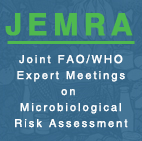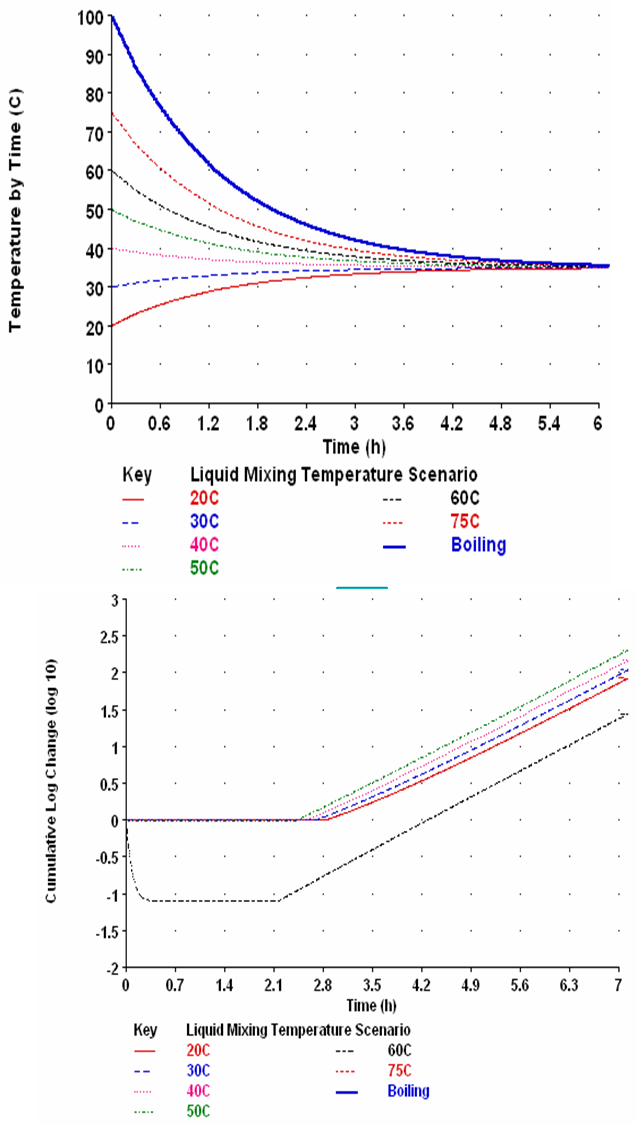 |
Risk Assessment for Cronobacter sakazakii in Powdered Infant Formula |

 |
|
|
|
|
|
|
|
Estimating Risk
To estimate risk, an initial concentration of C. sakazakii in the PIF is sampled from the concentration distribution specified. The concentration in finished powder is then estimated taking into account any sampling plan that may be in place. The model then iterates over the time from the beginning of the preparation of the formula (specifically rehydration of the powder) to the time of completion of feeding. The model predicts the change of any contaminating C. sakazakii population over time using the model inputs to specify the components of the preparation scenarios.
|
The preparation scenarios are defined by the preparation duration and temperature, and associated holding conditions of the rehydrated formula during preparation, cooling/holding of the formula after preparation but before feeding, active re-warming (or cooling) of the formula in preparation for feeding, and the feeding of the formula. At each time step the temperature of the formula is calculated and the associated lag phase duration and growth rate for C. sakazakii are estimated using predictive microbiology models. Any resulting increase or decrease in C. sakazakii levels is then calculated. This process is repeated for each time step until the completion of feeding. This provides an estimate of the dose ingested by the infant. Using a dose response model, this dose is converted into an estimate of the risk of illness and ultimately the number of illnesses per million infant days.
Relative Risk Reduction
The tool is intended to be used to explore changes in risk across a variety of sampling plans and preparation and handling scenarios. In line with this model philosophy, the risk estimates are presented in terms of the risk reduction. To estimate risk reduction it is necessary to specify a set of conditions (a scenario) to which all other scenarios will be compared. This is the Baseline Scenario. When exploring the impact of sampling plans it is assumed that the baseline is always the absence of a sampling plan. For preparation and handling the user is able to specify the specific scenario that represents the baseline. The result is an estimate of the risk reduction across the scenarios considered. Estimates of risk can then be readily compared across preparation scenarios and sampling plans to determine which scenarios present both desirable, and achievable, levels of risk mitigation. |
|
 |
|
|
|
|
|
|
|
|
|
|